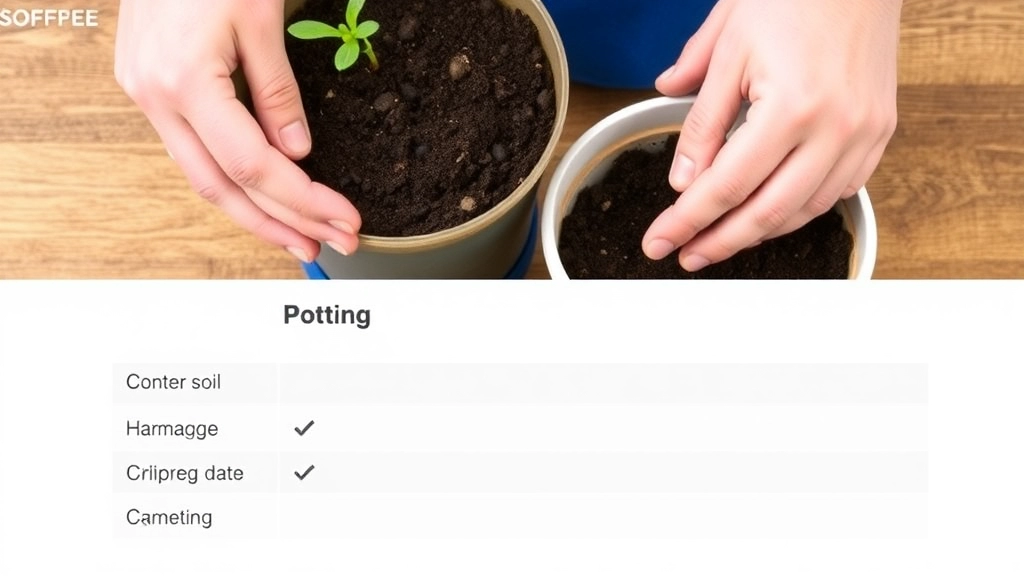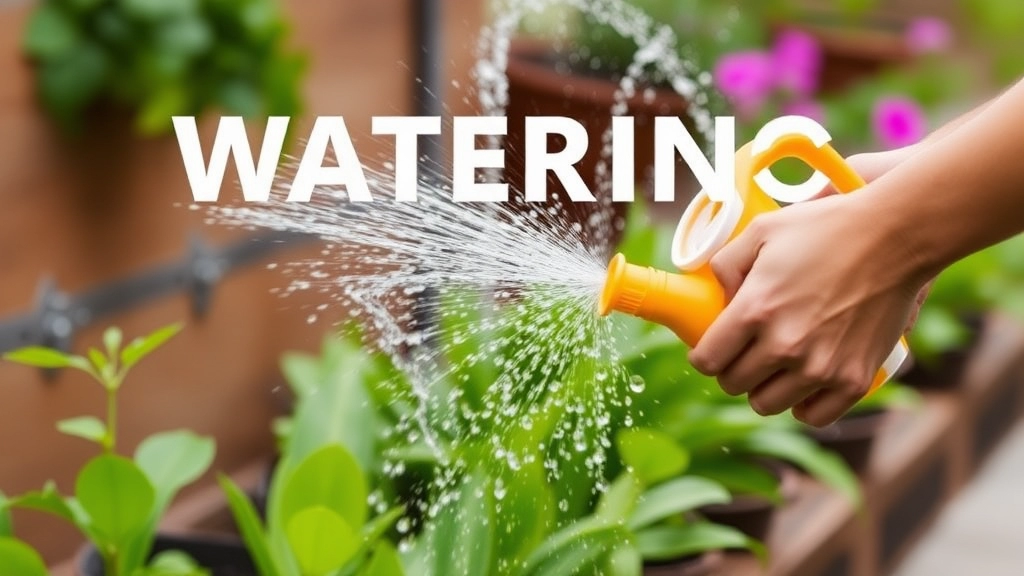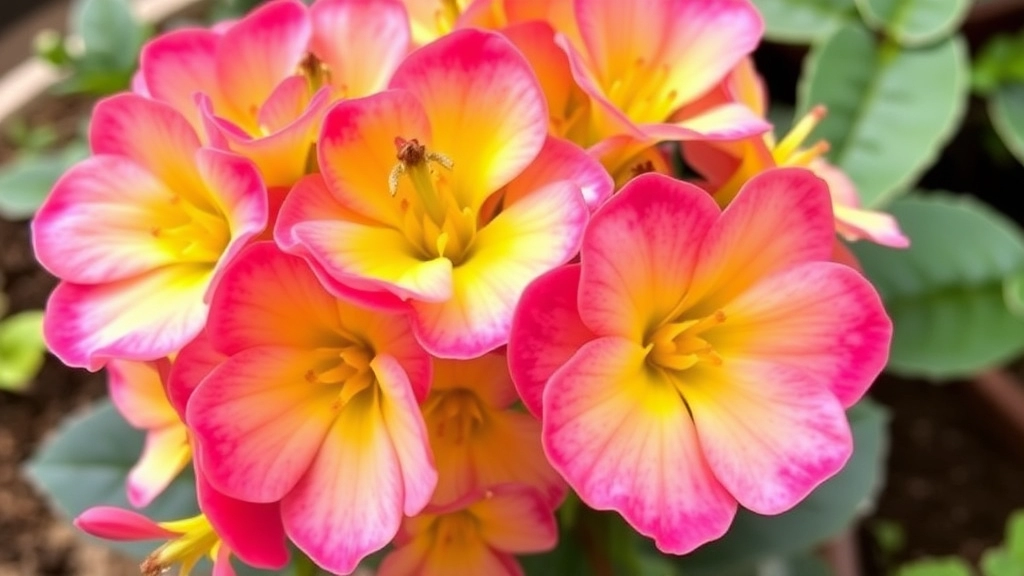Kalanchoe Care Basics
When it comes to bountiful Kalanchoe care, getting the basics right is key. These charming succulents thrive best in well-draining soil and pots that allow for proper airflow. Ensuring your Kalanchoe gets the right amount of light and maintaining an optimal temperature can make all the difference in its growth.
Watering
Watering is another crucial aspect. Overwatering can be detrimental, so it’s essential to let the soil dry out between watering sessions.
Additional Care Tips
- Regular pruning helps keep your plant healthy and encourages new growth.
- Don’t forget to fertilize during the growing season to provide your Kalanchoe with the nutrients it needs.
- Be vigilant about pests and diseases to keep your plant thriving.
Ideal Growing Conditions
Are you struggling to create the perfect environment for your plants?
Understanding the ideal growing conditions is crucial for successful gardening.
Plants thrive in specific climates and environments, so it’s essential to tailor your approach.
Key Factors for Ideal Growth
- Climate:
- Most plants prefer a temperate climate.
- Consider your local weather patternsâhumidity, rainfall, and temperature variations.
- Soil Quality:
- Well-draining soil is vital.
- Aim for a mix of loam, sand, and organic matter to enhance aeration and nutrient retention.
- Location:
- A sheltered spot can protect plants from harsh winds.
- Ensure your planting area is accessible for maintenance.
- Water Availability:
- Consistent moisture is essential, but avoid waterlogging.
- A rainwater collection system can be beneficial.
- Seasonality:
- Different plants have varying seasonal needs.
- Research the best planting times for your specific species.
By focusing on these factors, you can create the ideal conditions for your plants to flourish. For more detailed guidance, check out our Ultimate Guide to Growing and Caring for Succulent Plant Kalanchoe and learn the Causes and Solutions for Black Spots on Kalanchoe Leaves.
Potting and Soil Requirements

So, you’re ready to pot up your new plant, but what’s the best way to go about it?
Choosing the right pot and soil is crucial for your plant’s health.
Here’s what you need to consider:
- Pot Size:
- Make sure it’s not too big or too small.
- A pot that’s about 2 inches larger in diameter than the current one is usually perfect.
- Drainage:
- Always choose pots with drainage holes.
- This prevents water from sitting at the bottom and causing root rot.
- Soil Type:
- Use a well-draining potting mix.
- Look for mixes labelled for your specific plant type, like cacti or orchids.
- pH Level:
- Most plants thrive in a slightly acidic to neutral pH (around 6-7).
- You can buy pH test kits to check your soil.
- Additives:
- Consider adding perlite or vermiculite for extra drainage.
- This is especially helpful for plants that prefer drier conditions.
Let’s say you’ve got a lovely peace lily.
You’d want to go with a pot that’s around 12 inches wide and a soil mix that retains some moisture while still draining well.
Remember, the right potting and soil setup can make all the difference in how your plant grows.
Light and Temperature Needs
Understanding the light and temperature requirements of your plants is crucial for their overall health and growth. Many plant enthusiasts often wonder: “How much light does my plant really need?” or “What temperature is ideal for my indoor garden?”
Light Requirements
Most plants thrive in bright, indirect sunlight. Here are some key points to consider when assessing your plants’ light needs:
- Direct Sunlight: Some plants, like succulents and cacti, enjoy full sun. Aim for 6-8 hours of direct sunlight daily.
- Indirect Light: Many houseplants prefer bright, indirect light. This can be achieved by placing them near a window but not in the direct path of the sun’s rays.
- Low Light: If you have a shadier spot, consider low-light plants like snake plants or pothos, which can survive with minimal light.
Temperature Needs
Temperature plays a significant role in plant health. Here’s what you should keep in mind:
- Ideal Range: Most houseplants thrive in temperatures between 18°C to 24°C (65°F to 75°F).
- Nighttime Drop: A slight drop in temperature at night can be beneficial. Aim for a nighttime temperature of around 15°C to 18°C (59°F to 65°F).
- Avoid Extremes: Keep plants away from drafts, heating vents, and air conditioning units to prevent stress and damage. For more detailed care tips, you might want to check out this Florist Kalanchoe Plant Care Guide.
For those interested in specific plant care, such as succulents, this Blue Kalanchoe Succulent Care Guide offers comprehensive information on how to keep your plants healthy and thriving.
Watering Guidelines

Have you ever wondered if you’re overwatering or underwatering your plants?
Getting the watering just right is crucial for healthy growth.
Here’s how to nail it:
- Check the Soil Moisture: Before watering, stick your finger about an inch into the soil. If it feels dry, it’s time to water.
- Water Thoroughly: When you do water, ensure you soak the soil evenly. This encourages deep root growth.
- Frequency Matters: Depending on the plant and the season, watering can vary. Generally, aim for every 1-2 weeks, adjusting based on humidity and temperature.
- Use Room Temperature Water: Cold water can shock the roots. Let your water sit for a while before using it.
- Drainage is Key: Ensure your pots have drainage holes. Standing water can lead to root rot.
- Watch for Signs: Yellowing leaves can indicate overwatering, while wilting can suggest underwatering.
Incorporating these guidelines will set you on the right path to nurturing your plants.
Pruning and Maintenance
When it comes to maintaining healthy plants, pruning plays a pivotal role. Are you unsure about how to prune effectively? Or perhaps you worry about damaging your plants during the process?
Pruning not only encourages growth but also helps in shaping your plants, ensuring they remain vibrant and manageable.
Fertilization Schedule

So, you’ve got your plants thriving, but how do you keep that momentum going?
Fertilization is key to maintaining healthy growth and vibrant blooms.
When to Fertilize
- Growing Season: Most plants benefit from fertilisation during their active growing season, typically spring and summer.
- Frequency: Aim for every 4-6 weeks. This keeps nutrients flowing without overwhelming your plants.
What to Use
- Balanced Fertilizer: A 10-10-10 NPK (Nitrogen, Phosphorus, Potassium) is a solid choice for general use.
- Organic Options: Think compost, worm castings, or fish emulsion. They’re gentle and improve soil health over time.
How to Apply
- Dilution: Always dilute liquid fertilizers according to package instructions. Too concentrated can harm your plants.
- Even Distribution: Spread granular fertilizers evenly around the base of the plant, avoiding direct contact with the stems.
Signs Your Plant Needs Fertilizer
- Yellowing Leaves: This can indicate a nutrient deficiency.
- Stunted Growth: If your plant isn’t growing as expected, it might be time to feed it.
Seasonal Adjustments
- Fall/Winter: Most plants slow down during these months. Cut back on fertilization, as they need less nutrients during dormancy.
Propagation Techniques
When it comes to expanding your plant collection, understanding propagation techniques is essential. Many gardeners wonder how to effectively propagate their plants without the risk of failure.
Common Propagation Methods
- Cuttings
- Stem Cuttings: Take a healthy stem cutting, ideally 4-6 inches long. Remove the lower leaves and place it in water or directly into soil.
- Leaf Cuttings: Some plants can be propagated from a single leaf. Ensure the leaf has a good base and place it in soil.
- Division
This method works well for clumping plants. Carefully separate the root ball into smaller sections, ensuring each has roots and shoots. Replant immediately.
- Layering
For plants with flexible stems, bury a part of the stem in soil while it’s still attached to the parent plant. Once roots form, cut it away and transplant.
- Seeds
Collect seeds from mature plants. Sow them in a seed-starting mix and keep them moist until germination.
Common Pests and Diseases
So, you’ve got your plant thriving, but then you notice something off.
Are those little critters ruining your hard work?
Or maybe you see some discolouration on the leaves?
Let’s chat about common pests and diseases that can pop up and how to tackle them.
Common Pests
- Aphids
- Tiny, sap-sucking insects.
- They can cause leaves to curl and distort.
- Look for clusters on young shoots.
- Spider Mites
- These guys are super tiny and often go unnoticed until it’s too late.
- They leave fine webbing on leaves and can cause yellow spots.
- High temperatures and low humidity make them thrive.
- Mealybugs
- Fluffy little pests that love to hide in leaf joints.
- They suck sap and can lead to sticky leaves.
- A tell-tale sign is a white, cottony substance.
- Whiteflies
- Small, white, moth-like insects that fly away when disturbed.
- They can weaken your plant by sucking its juices.
- Look for yellowing leaves and sticky residue.
Common Diseases
- Powdery Mildew
- A fungal disease that appears as a white powder on leaves.
- It thrives in high humidity and poor air circulation.
- Keep an eye on your watering and airflow.
- Root Rot
- Caused by overwatering, leading to mushy roots.
- Check for a foul smell or blackened roots.
- Ensure your pots have good drainage.
- Leaf Spot
- Dark spots on leaves can signal a fungal or bacterial issue.
- This often happens in overly wet conditions.
- Remove affected leaves to stop the spread.
- Botrytis Blight (Grey Mold)
- A fuzzy grey mould that appears in damp conditions.
- It can affect flowers and leaves, especially in crowded spaces.
- Keep your plants spaced out and dry.
Prevention and Treatment
- Regular Checks
- Inspect your plants weekly.
- Early detection is key!
- Natural Remedies
- Neem oil is a fantastic organic solution for pests.
- A mix of soap and water can help with aphids and mealybugs.
- Proper Care
- Maintain good air circulation and avoid overcrowding.
- Adjust your watering practices to prevent root rot.
- Quarantine New Plants
- Always isolate new additions for a couple of weeks.
- This helps prevent any sneaky pests from spreading.
FAQs on Bountiful Kalanchoe Care
What type of pot should I use for my Kalanchoe?
Choose a pot that is about 2 inches larger in diameter than the current one and ensure it has drainage holes to prevent root rot.
What kind of soil is best for Kalanchoe plants?
Use a well-draining potting mix. Look for mixes specifically labelled for succulents or cacti to ensure proper drainage.
How often should I water my Kalanchoe?
Water your Kalanchoe every 1-2 weeks, depending on the season and humidity levels. Always check the soil moisture before watering.
What is the best way to water Kalanchoe plants?
Water thoroughly and ensure the soil is soaked evenly. Use room temperature water to avoid shocking the roots.
How can I tell if I am overwatering or underwatering my Kalanchoe?
Yellowing leaves can indicate overwatering, while wilting can suggest underwatering. Always check the soil moisture before watering.
When should I fertilize my Kalanchoe?
Fertilize during the active growing season, typically in spring and summer, every 4-6 weeks to keep nutrients flowing without overwhelming the plant.
What type of fertilizer should I use for Kalanchoe?
A balanced 10-10-10 NPK fertilizer is a solid choice for general use. Organic options like compost, worm castings, or fish emulsion are also beneficial.
How should I apply fertilizer to my Kalanchoe?
Always dilute liquid fertilizers according to package instructions. Spread granular fertilizers evenly around the base of the plant, avoiding direct contact with the stems.
What are the signs that my Kalanchoe needs fertilizer?
Yellowing leaves and stunted growth can indicate a nutrient deficiency, suggesting it’s time to fertilize.
Should I fertilize my Kalanchoe in the fall and winter?
Most plants, including Kalanchoe, slow down during fall and winter. Reduce fertilization during these months as they require fewer nutrients during dormancy.
References
-
How To Pot A Plant â Gardening Know How
-
How to Water Your Plants â The Spruce
-
Plant Fertilizing Schedule â The Old Farmer’s Almanac
- Aphids
